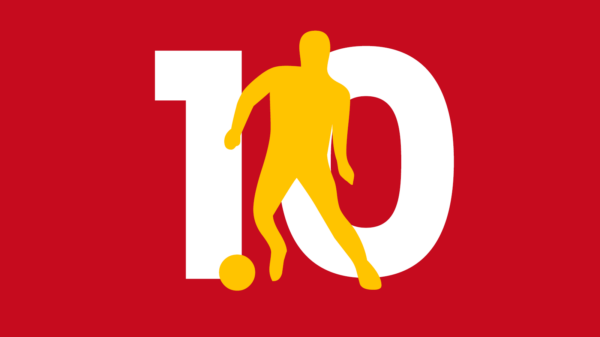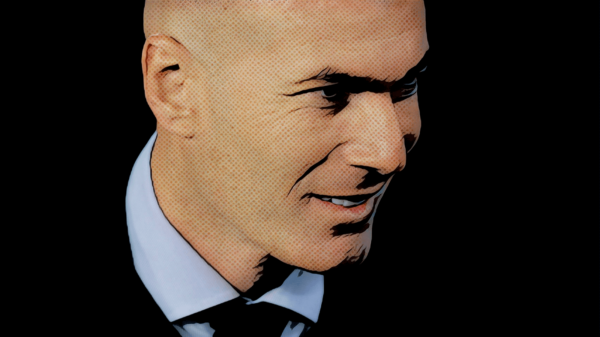Belgium’s ability to dish out exciting attacking players has been well documented in recent times and Yannick Ferreira Carrasco certainly fits right into the category. Having enjoyed a productive season with Monaco under Leonardo Jardim, Ferreira Carrasco looked set to move on to a bigger challenge and Atletico Madrid were on hand to provide the youngster with a great opportunity.
Who is Yannick Ferreira Carrasco?
Born in Belgium to Portuguese and Spanish parents, coming to prominence in France and now set to embark on a new adventure with Atletico Madrid, Yannick Ferreira Carrasco is in many ways the perfect embodiment of the globalization that has become the nature of contemporary football. Shuffling around a variety of clubs in his homeland before making himself a name with Genk’s youth side in 2009-10, the player joined AS Monaco on a free that summer, and spent two seasons with the B team, winning the Coupe Gambardella in his first campaign in France.

In late 2011, Monaco were bought by Russian billionaire Dmitry Ryblovlev, whose plans for the club far exceeded that of the previous regime, who had overseen a relegation to Ligue 2 and an indifferent response in the subsequent season in the second tier as the club finishing eighth. For the 2012-13 season, things changed drastically under the new owner, as a flurry of exits in the summer afforded new manager Claudio Ranieri the chance to expertly blend the team’s veteran players with a crop of promising youngsters. Over the course of the season, the manager gave significant game time to the likes of Valere Germain, Emmanuel Riviere, Nampalys Mendy, Lucas Ocampos and of course, a certain young Belgian, Yannick Ferreira Carrasco. With 6 goals and 6 assists and the team easily striding to the top of France’s second division, things looked bright indeed for the young winger.
However, proceedings failed to go as neatly as one would have liked, as Ranieri’s second season in charge brought another off-season of change, but rather than the odd canny buy from fellow Ligue 2 sides, the likes of James Rodriguez, Joao Moutinho, Radamel Falcao, Jeremy Toulalan and Eric Abidal arrived, bringing with them a wealth of experience, but by necessity limiting the opportunities of those youngsters who had performed so well to earn promotion in the previous season. To include these big-name acquisitions, Ranieri employed a narrow 4-3-1-2, with Rodriguez behind two strikers, Toulalan deepest in midfield and Moutinho used out of position on the left, opposite one of Geoffrey Kondogbia or Mounir Obbadi.
After a foot injury suffered in the autumn, Ferreira Carrasco found it very difficult to break into this side, and made only two league starts in the season’s second half, often instead turning out for the reserve side. With the club finishing their return to Ligue 1 in second place, good enough for automatic qualification to the Champions League group stages, the results spoke for themselves, and things looked bleak indeed for the young winger.
The following summer, 2014, saw yet another shift in modus operandi for Monaco, only this time, it would be to Ferreira Carrasco’s benefit. With Ryblovlev enduring a costly divorce and the club being find by the LFP as makeshift means of creating a level playing field as regarded taxation, Rodriguez was sold, Falcao was shipped out on loan, and a new manager was brought in in the form of Leonardo Jardim. Young but with a reputation for improving sides defensively while also developing youth, Jardim seemed the ideal candidate to manage the arrivals of the likes of Bernardo Silva and Wallace, his hiring signaling a fundamental shift to a club bent on developing young talent, rather than buying at the top of the market.
The new manager took a while to work out his best system, but by November he had constructed a dynamic counter-attacking 4-3-3 with Ferreira Carrasco and Silva manning the wings and Anthony Martial deployed centrally. A surprise progression to the Champions League quarterfinals, where the club was narrowly eliminated by Juventus, was the season’s best accomplishment, and manager and squad alike were rewarded with lucrative extensions. Slowly overtaking Marseille in the league took some effort, but with Champions League football secured once again, the season was an unqualified success, and Ferreira Carrasco was key to all of that.
With 9 assists, he placed third in the league, behind only Javier Pastore and Dimitri Payet, players who operated more consistently as central playmakers. His 6 goals in the league equalled his best return since arriving in the principality, and with a handful of senior caps for Belgium as well, Ferreira Carrasco is now being rightly hailed as one of Europe’s best young attackers. With his recent move to Atletico Madrid, he has arrived at a club that is a decided step up from Monaco in terms of ambition, with big shoes to fill in the form of the departing Arda Turan.
Style of play, Strengths, and Weaknesses
Despite being employed as a wide player able to operate on either flank, Ferreira Carrasco is far from the prototypical winger. Somewhat tall for the position at 1.80 meters, he uses his ability with the ball at his feet and his pace to get by defenders, the combination of the two succeeding in stymieing opposing fullbacks. Not shy of a challenge, but perhaps a bit selfish at times, the Belgian also relies heavily on unpredictability.
If an opponent can guess whether he is going to use his pace to beat them to the by-line, or to cut inside, he is still faced with trying to gauge whether or not the youngster will have a shot, lay the ball off for an onrushing striker, or play the ball wide for a full-back. Because he fits neither the striker mold nor that of a wide player very neatly, Ferreira Carrasco is able to be used convincingly across the attacking positions, with the possible exception of a traditional center forward. Admittedly, this unpredictability can have its drawbacks, especially with a young player, but by and large, if one manages to keep an opponent guessing, one has the advantage, and it is the repeated enjoyment of this advantage that has made the player such a thrill to watch this season.
The obvious statistic that stands out via a brief glance at Ferreira Carrasco’s vita is the number of assists he has managed to tally despite playing in a wide position. Most wingers in a 4-3-3 are asked to link play or draw defenders out of position, using their pace and ability with the ball at their feet to influence the game. Sure, they can contribute the odd goal and assist, and truly exceptional wide players may even be consistent scorers, a la Arjen Robben. But more often, a wide player in a counter-attacking 4-3-3 is tasked with creating space for the center forward and the furthest forward of the midfield three, or even overlapping fullbacks.
Thus, their role becomes almost one of flattering to deceive rather than achieving any tangible results. For Ferreira Carrasco to have recorded 9 assists and 6 goals (fourth highest in the team) for a side that is by no means an offensive juggernaut such as the likes of Lyon, Paris Saint-Germain or even Marseille, is truly remarkable.
While the sheer number of assists is impressive, how they happened is perhaps doubly so. While a consistent threat in dead ball situations, (the source of 3 of his assists last season) it is his dribbling that creates the opportunities for his teammates. Ranked fourth in total dribbles in the league last year, this allows him to get into dangerous positions, making his job in terms of passing that much easier, as a simple square ball, lay-off or through ball along the ground is much easier to execute than a searching long ball or cross. With Monaco’s counter-attacking approach, Ferreira Carrasco is himself often the recipient of long balls and his control in this regard is stellar as well, easily bringing the ball down to create space for himself and his fellow attackers.
Beyond both of these, the most important part of Ferreira Carrasco’s game is his positional adaptability. As previously mentioned, he is capable of playing on either wing or off of a more stationary target man, but when he is able to combine all of those roles into one is when he really shines. Once Martial and Silva had become permanent fixtures in Monaco’s starting lineup alongside the Belgian, the team’s attack, previously somewhat moribund, sprung into life, exuding a dynamism driven by the trio’s overlapping skill sets.
All adept with the ball at their feet, but also self-possessed enough to take on a shot when the opportunity presented itself, Monaco’s front three were irresistible in the season’s run-in, eagerly switching positions and cooperatively making runs to create space for each other. A key part of this was, of course, Ferreira Carrasco’s improved defensive work and new-found willingness to be less selfish in his decision-making. Completing 50% more passes per game whilst maintaining a similar level of accuracy, the Belgian also saw a concomitant increase in chances created, ranking behind only Montpellier’s Anthony Mounier among Ligue 1’s wide players.

Source: GSN Index SRC (Soccer related characteristics): 30+ player characteristics // +/- statistic: Performance data // Potential: Economic & financial predictive algorithms // Level of Play: Rating of entire career
Despite having all this in the player’s favor, however, it would be foolish to praise him too highly. As previously mentioned, much of Ferreira Carrasco’s effectiveness stems from his unpredictability, but there is one element that hinders this. While a strong dribbler of the ball, there is unfortunately a strong preference on the part of the player to favor his right foot. This is not in and of itself an issue, as the likes of Franck Ribery and Arjen Robben have built very impressive careers on being essentially “one-footed.”
However, both of those players are a good ten years older than Ferreira Carrasco and grew up in an era with much less media frenzy surrounding football, and perhaps less developed coaching methods. In the modern game, a top player really needs to be able to have at least some facility with both feet, and there were definitely occasions during last season where a moment’s hesitation to move the ball from foot to foot was decisive in breaking up a promising counter-attack.
The strong preference for one foot is undoubtedly Ferreira Carrasco’s biggest issue upon which improvement could be made, but several others could yet hinder further progress. As the player’s confidence has grown, so too have the number of times in which he has lost the ball by trying to do too much with it. Whether it be taking on too many defenders or trying to make a pass more complicated than it ought to be, a general lack of decision making is still somewhat of a black mark on his game.
The other issue that is of primary concern but could be less of an issue in Spain is the player’s upper body strength, as too often the player is just nudged off the ball, failing to draw a foul in the process. As we saw with Nabil Fekir’s breakout season for Lyon, the ability to draw a foul within the laws of the game owing to one’s strength is a very useful trait to have in one’s locker, especially if beating an opponent for pace isn’t an option in a given match. Lastly, while Ferreira Carrasco has improved defensively, he still sometimes succumbs to his attacking proclivities and fails to track the opposition’s runners. This was less of an issue within Jardim’s 4-3-3, but will need some improvement if the Belgian is to become a favorite of Diego Simeone.
What does the future hold?
Having demonstrated his considerable talents when given a consistent run in the side, as well as improving all if not most facets of his game, it was somewhat inevitable that Ferreira Carrasco move on to a bigger club. Tottenham apparently had a formal offer knocked back, and Arsenal were also linked with the player. The decision, then, to move to Atletico Madrid was thus greeted with some surprise. It is true that Ferreira Carrasco, despite often playing on the left at Monaco, is a naturally right-sided attacking player and makes a fine replacement for the departed Arda Turan.
It is also true that the Belgian’s age, passing ability and set piece delivery are in his favor when compared to the Turkish international. Moving away from the physicality of Ligue 1 may also help the player to blossom, as his strength has never been one of his biggest assets, and with more of an overall focus on technique in La Liga, the player has the potential to better his decision-making without the fear of a crunching tackle or being shrugged off of the ball.
What doesn’t add up, however, is Ferreira Carrasco’s defensive contribution. He has admittedly improved in this department, especially after his lack of commitment in tracking back often saw him excluded in Monaco’s first season back in Ligue 1, with Claudio Ranieri favoring a somewhat dour style of football, with no room in the side for a player not willing to put in a shift. Despite being much improved in this regard under the stewardship of Jardim, Ferreira Carrasco still doesn’t quite seem to be the Atletico ideal of the player who will run himself into the ground as part of team defending.
That being said, what does work in the youngster’s favor is his versatility. With Koke firmly ensconced on the left and Raul Garcia the favorite on the opposite flank, it will seem tough for Ferreira Carrasco to get a game, particularly as the arrivals of both Jackson Martinez and Luciano Vietto would seem to indicate a preference on the part of Simeone to retain his favored 4-4-2. Add Antoine Griezmann, whose 22 goals far outdistanced any other player in the squad, to the mix, and time in the starting eleven seems hard to come by. However, with his ability to play on either wing, or as an attacking midfielder on one of the rare occasions when Simeone employs a three-man midfield, with the endless cup and European matches on Atletico’s fixture list, he should get the odd opportunity.
With Garcia 29 this summer, and Ferreira Carrasco not 22 until after the season starts, Los Colchoneros are taking a bet on a player who is obviously talented, yet hungry to prove himself at a higher level. It is gambit that the club have tried before, with the likes of Turan and Griezmann, to obvious success, and if Ferreira Carrasco proves himself willing to work under the stringent demands of Simeone, it will be no surprise to see him soon installed as a first team regular, if not this season than perhaps the next.
VIDEO: World of Football’s take on Ferreira Carrasco
Written by Eric Devin



























































